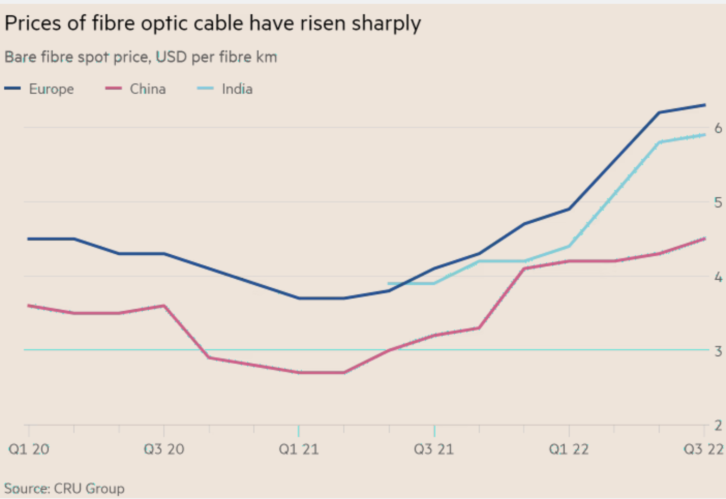
An acute global shortage of fiber optic cabling is set to create significant bottlenecks according to analysis from market intelligence firm Cru Group. Their research shows shows the price of fiber has risen 70% over the last 18 months or so, as demand for internet-based services rises and countries press press ahead with 5G rollouts.
“Given that the cost of deployment has suddenly doubled, there are now questions around whether countries are going to be able to meet targets set for infrastructure build, and whether this could have an impact on global connectivity,” explained Cru.
Fiber optic cabling is not only ubiquitous in AV, it’s a foundational component of everything from high-speed broadband to 5G to the global network of sub-marine cables. According to my colleagues at Tech Radar, the current issues will also impact the development of new data center facilities, hindering expansion plans among VPN, cloud storage, CDNs and the like. The ongoing shortage can be attributed to a number of different factors, from a steep rise in demand (consumption is up 8.1% year-on-year) to shortages of key ingredients in the manufacturing process, such as helium gas and silicon tetrachloride. Cru attributes the helium shortage in part to plant outages in Russia and the US, which has caused prices of the element to increase by 135 percent over the past two years. Silicon tetrachloride has reportedly increased in price by a “mere” 50 percent.
This has led to significant increases in lead times for some fiber products, stretching out from 20 weeks to almost a year for many smaller customers. as companies prioritize their biggest customers.
“In my professional career I’ve never seen anything like this inflationary crunch,” Wendell Weeks, chief executive of Corning, told the Financial Times. Corning is the biggest producer of fiber-optic cable in the world, which played a significant role in inventing the technology in 1970.
Prices of fiber have reached their highest level since July 2019, according to Cru, although North America has been less severely hit than Europe, China, and India. US prices have increased by only 2 percent .
Weeks said that in the US, prices had increased by only 2 percent in 2022 and had otherwise fallen every year since 2012. Globally the fluctuating increase is estimated at least at 20 percent over the past six months, according to Martijn Blanken, chief executive of Exa Infrastructure, an international digital infrastructure company. “We add clauses with our clients so that we’re not liable for these price hikes,” he added.










